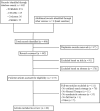The mechanisms of manual therapy: A living review of systematic, narrative, and scoping reviews
- PMID: 40100908
- PMCID: PMC11918397
- DOI: 10.1371/journal.pone.0319586
The mechanisms of manual therapy: A living review of systematic, narrative, and scoping reviews
Abstract
Introduction: Treatment mechanisms are the underlying process or pathway through which a treatment influences the body. This includes molecular, cellular and physiological processes or pathways contributing to treatment effect. Manual therapy (MT) evokes complex mechanistic responses across body systems, interacting with the individual patient and context to promote a treatment response. Challenges arise as mechanistic studies are spread across multiple professions, settings and populations. The purpose of this review is to summarize treatment mechanisms that have been reported to occur with MT application.
Methods: Four electronic databases were searched (Medline, CINAHL, Cochrane Library, and PEDro) for reviews investigating mechanistic responses which occur during/post application of MT. This review was registered a priori with PROSPERO (CRD42023444839). Methodological quality (AMSTAR-2) and risk of bias (ROBIS) were assessed for systematic and scoping reviews. Data were synthesized by mechanistic domain.
Results: Sixty-two reviews were included. Systematic reviews (n = 35), narrative reviews (n = 24), and scoping reviews (n = 4) of asymptomatic (n = 37), symptomatic (n = 43), non-specified human subjects (n = 7) and animals (n = 7) were included. Reviews of moderate quality supported neurovascular, neurological, and neurotransmitter/neuropeptide changes. Reviews of low quality supported neuroimmunce, neuromuscular, and neuroendocrine changes. Reviews of critically low quality support biomechanical changes.
Conclusions: Findings support critically low to moderate quality evidence of complex multisystem mechanistic responses occurring with the application of MT. Results support peripheral, segmental spinal, and supraspinal mechanisms occurring with the application of MT, which can be measured directly or indirectly. The clinical value of these findings has not been well established. While MT has proven to be an effective intervention to treat conditions such as pain, the current body of literature leaves uncertainty as to 'why' MT interventions work, and future research should look to better define which mechanisms (or combinations of mechanisms) are mediators of clinical response.
Copyright: This is an open access article, free of all copyright, and may be freely reproduced, distributed, transmitted, modified, built upon, or otherwise used by anyone for any lawful purpose. The work is made available under the Creative Commons CC0 public domain dedication.
Conflict of interest statement
I have read the journal's policy and the authors of this manuscript have the following competing interests: Chad Cook is the Director of the Center of Excellence in Manual and Manipulative Therapy at Duke University and a portion of his salary is supported by that role. Chad published a book on OMT and a course with AGENCE EBP on Manual Therapy which he receives royalties. He is also a consultant for the Hawkins Foundation, Zimmer Biomedical, and Akron Children’s. The Remaining authors have declared that no competing interests exist.
Figures
References
-
- National Institutes of Health (NIH). In: Neural Mechanisms of Force-Based Manipulations: High Priority Research Networks [Internet]. 2 Feb 2023. Available: https://grants.nih.gov/grants/guide/rfa-files/RFA-AT-21-006.html#:~:text...
-
- Cook C. The demonization of manual therapy. MSK – Muskuloskelettale Physiotherapie. 2021;25:125–32.
-
- Courtney C, Fernández de las Peñas C. Manual Therapy for Chronic Conditions: A Mechanistic Approach to Modern Manual Therapy. In: Simoneau G, editor. Mechanisms of Manual Therapy Interventions. Lacrosse, WI: Academy of Orthopaedic Physical Therapy. APTA; 2021. p. 5–18.
Publication types
MeSH terms
LinkOut - more resources
Full Text Sources



